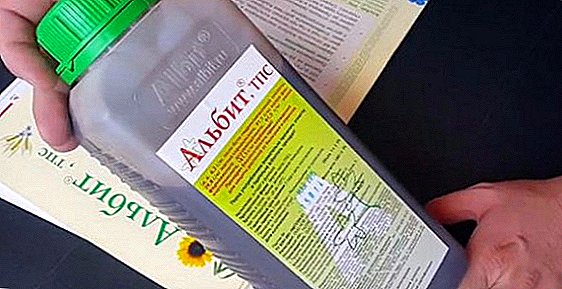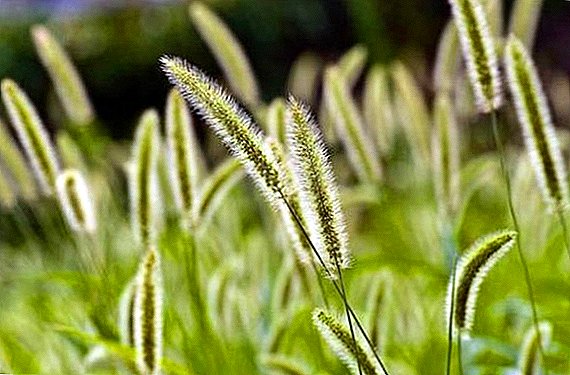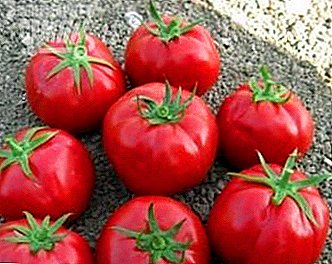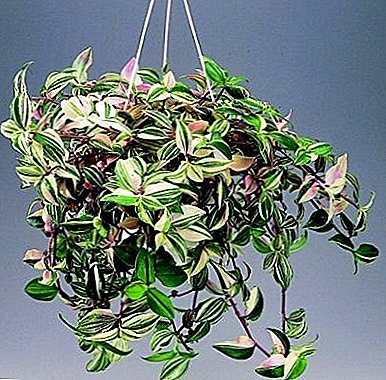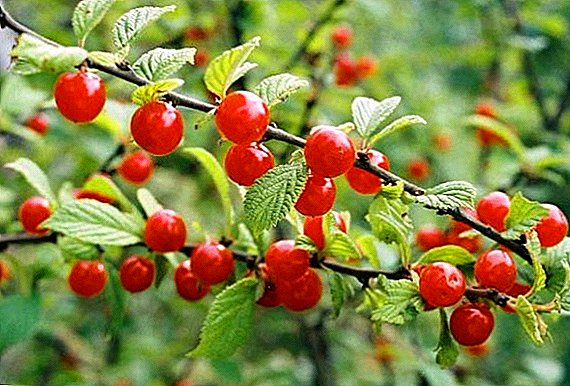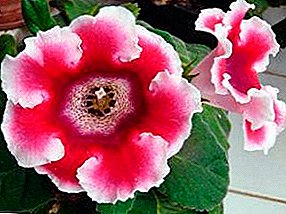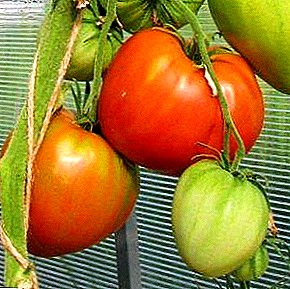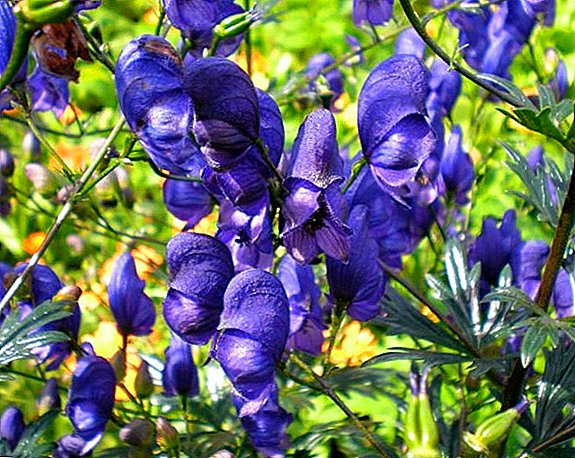 Aconite in nature it is not very common, in some areas and at all on the verge of extinction, but its medicinal properties have been valued for a long time. In folk medicine, the properties of the plant are used in many, sometimes hopeless cases, but because of its toxicity, many are afraid to use aconite in treatment.
Aconite in nature it is not very common, in some areas and at all on the verge of extinction, but its medicinal properties have been valued for a long time. In folk medicine, the properties of the plant are used in many, sometimes hopeless cases, but because of its toxicity, many are afraid to use aconite in treatment.
The chemical composition of aconite
The composition of aconite is rich in alkaloids, acids, resins, macro - and microelements. In the roots and leaves of the plant there are alkaloids of the first group, such as:
- sasaaconitin;
- hypoconconitin;
- getaanconitin;
- mezaanconitin;
- benzoylakonin with a predominance in the percentage of aconitine.
 The second group of alkaloids is represented napallin, ephedrine and spartein. Acid in the composition of aconite: transcanotine, steoric, citric, benzoic, palmitic, fumaric, linoleic, oleic, myristic. The root of the plant contains saponins and flavones, resins, starch, Daucosterol. The leaves have tannins, biocompounds, inositol, flavonoids and a large number of macro and micronutrients:
The second group of alkaloids is represented napallin, ephedrine and spartein. Acid in the composition of aconite: transcanotine, steoric, citric, benzoic, palmitic, fumaric, linoleic, oleic, myristic. The root of the plant contains saponins and flavones, resins, starch, Daucosterol. The leaves have tannins, biocompounds, inositol, flavonoids and a large number of macro and micronutrients:- Macronutrients: potassium, calcium, magnesium and iron.
- Trace elements: manganese, zinc, barium, nickel, boron, selenium, lead, copper, chromium and others.
Did you know? The aconite alkaloids were discovered in 1820 by the French chemist Peschier, but the main, the brightest of them - aconitine was isolated in 1833 by German toxicologists Geiger and Hesse.
Therapeutic effects of aconite on the human body
The use of a wrestler in traditional medicine has a wide range, due to its rich composition, it has many properties that are beneficial to the body.
Alkaloids, which are found in large quantities in the composition of the plant, are used in many pharmacological preparations. These substances have an extensive therapeutic effect. They are used as sedatives, painkillers and antispasmodics. Alkaloids have a stimulating effect on the central nervous system. They are part of the drugs expectorant properties, antihypertensive and hormonal.
Important! Alkaloids are potent and unsafe substances. Treatment with drugs based on alkaloids should be controlled by a specialist doctor. Tincture of aconite with an overdose can be fatal.
 Tanning substances of aconite have astringent, hemostatic, anti-inflammatory and bactericidal properties. Many people know the use of aconite for cancer. The flavonoids in the composition of aconite provide a positive effect in the treatment. These elements have antitumor, anti-inflammatory, antioxidant and anti-radiation effects.
Tanning substances of aconite have astringent, hemostatic, anti-inflammatory and bactericidal properties. Many people know the use of aconite for cancer. The flavonoids in the composition of aconite provide a positive effect in the treatment. These elements have antitumor, anti-inflammatory, antioxidant and anti-radiation effects.
Drugs that contain aconite have estrogenic, diuretic and bactericidal effects. Aconite is used in the treatment of ulcers, with some venereal ailments, thanks to coumarin in the composition of the plant is useful for constricted vessels and heart problems, disorders of the nervous system.
Aconite tincture and official anticancer drugs
Treatment of malignant tumors with aconite requires caution and careful study of all the nuances: from the correct preparation of the plant to the dosage and duration of the course. Aconitins in the composition of drugs are inherently aggressive elements with a large list of side effects.
Exhaust alkaloids fighter destroys not only cancer cells, but also detrimental effect on healthy cells of the body. In principle, this also applies to chemotherapy drugs used by official medicine, but nevertheless, today a wrestler is not included in the list of drugs approved by the WHO as a cure for oncology.
 Aconite has found application in oncology in traditional medicine. There is evidence that aconite, used as the main and auxiliary means, put on the feet of many patients whom official medicine could not help. Aconite does not have a narrow focus: It is used in many cases, both externally in the treatment of skin problems, and inward in a number of diseases.
Aconite has found application in oncology in traditional medicine. There is evidence that aconite, used as the main and auxiliary means, put on the feet of many patients whom official medicine could not help. Aconite does not have a narrow focus: It is used in many cases, both externally in the treatment of skin problems, and inward in a number of diseases.
Attention! If there are young children in the house, the drug based on aconite should be kept out of the reach of them.
Use in folk medicine: aconite treatment
Aconite tincture and decoctions based on it are used in the treatment of benign tumors, asthma and tuberculosis. Preparations on the basis of aconite tincture improve the condition of patients with multiple sclerosis, epilepsy, and nervous disorders. The tincture helps to reduce headaches and toothaches, infections of the mouth, rheumatic pains, arthritis symptoms.
Aconite tincture has been used in the treatment of cardiovascular diseases, duodenal ulcers and stomach. Outwardly, the tincture treats and facilitates the treatment of boils, purulent wounds, psoriasis, eczema and other skin diseases.
Tincture for the treatment of cardiovascular diseases
For the treatment of cardiovascular diseases use aconite roots:
- 10 g of root;
- 1 liter of vodka.
Tincture for the treatment of migraine and toothache
To prepare the tincture needed:
- 500 ml of vodka;
- 20 g of aconite root.
 Finely chop the root (use dry, not fresh), pour vodka. Insist during the week in the warmth and darkness. For migraines, the tincture is rubbed into the scalp for the night one teaspoon. When a toothache is rubbed at the location of the patient's tooth. If there is no irritation or an allergic reaction on the skin, you can increase the dose to a tablespoon. Treatment should last no more than three weeks.
Finely chop the root (use dry, not fresh), pour vodka. Insist during the week in the warmth and darkness. For migraines, the tincture is rubbed into the scalp for the night one teaspoon. When a toothache is rubbed at the location of the patient's tooth. If there is no irritation or an allergic reaction on the skin, you can increase the dose to a tablespoon. Treatment should last no more than three weeks.
Tincture for external use
Tincture for external use is prepared on the basis of the root of the plant, the treatment gives good results for neuroallergic problems, with concomitant skin rashes, for malignant skin diseases, and melanoma. Apply tincture to relieve the symptoms of psoriasis, erysipelas and neurodermatitis. For cooking will need:
- alcohol or vodka 500 ml;
- crushed dry root 20 g
Infusion for the treatment of duodenal ulcer
In the preparation of infusion for the treatment of duodenal ulcers use dry aconite root in a ground form. 20 g of root pour 0.6 ml of vodka, let it stand for a week in a dark place. Take from one to three tablespoons per day.
Broth for washing wounds and boils
 Broth dry root aconite successfully used in the treatment of boils and wounds. Chopped dry roots of 15 g pour 250 ml of boiling water, boil for 20 minutes. Remove from heat, strain, cool. Wounds and boils are washed three to four times a day.
Broth dry root aconite successfully used in the treatment of boils and wounds. Chopped dry roots of 15 g pour 250 ml of boiling water, boil for 20 minutes. Remove from heat, strain, cool. Wounds and boils are washed three to four times a day.
Ointment on the basis of the fighter for rheumatic pains
Aconite-based ointment is used for rheumatic pains, mastopathy, fibroadenoma and pain in the joints. To prepare take 5 g of the root (crushed) in 200 ml of olive oil. Ointment boil in a water bath. On the sore spot is applied, slightly covering the skin.
Interesting! From ancient times it is believed that aconite was part of the ointment of witches. Supposedly, rubbed with such an ointment, the witches acquired the ability to fly.
Collection and preparation of raw materials from aconite
Preparation and storage of medicinal fighter is carried out in gloves, aconite poisons easily penetrate the skin pores. Both the roots and the aerial parts of the plant are used as raw materials for medicinal preparations. The roots are harvested from August and finish in October. They are dug up, cleaned sticky ground and washed.
The roots are dried in a ventilated room at a temperature of up to 70 ° C. Store the obtained raw materials in a dry room without access to light.
 Aconite leaves are harvested from June to July, before flowering begins. During this period, the plant accumulates the maximum amount of useful elements. Harvest green leaves and inflorescences, not damaged by insects. Raw materials are sorted out by discarding weeds and dried parts, then dried in the shade. The finished raw material is stored in glass for two years in the reach of children. After removing the product for storage, wash your hands.
Aconite leaves are harvested from June to July, before flowering begins. During this period, the plant accumulates the maximum amount of useful elements. Harvest green leaves and inflorescences, not damaged by insects. Raw materials are sorted out by discarding weeds and dried parts, then dried in the shade. The finished raw material is stored in glass for two years in the reach of children. After removing the product for storage, wash your hands.
Contraindications. First aid for aconite poisoning
There are a number of contraindications in the treatment of aconite. Fighter-based drugs are not desirable for children under 14, women in the position, hypotensive women and nursing mothers. It is strictly forbidden medication with aconite to people with individual intolerance to any element in the composition of aconite.
An allergic reaction can be checked by dropping a drop of juice on the elbow bend, in case of irritation such a drug should be discarded.
 What to do when aconite poisoning outside of hospital conditions? The first is gastric lavage. You need to drink about three liters of warm, slightly salty water and cause an emetic reaction. Then give some absorbent, such as activated carbon. If you have on hand, you can also give a laxative. Be sure to call an ambulance. You may need long-term hospital treatment.
What to do when aconite poisoning outside of hospital conditions? The first is gastric lavage. You need to drink about three liters of warm, slightly salty water and cause an emetic reaction. Then give some absorbent, such as activated carbon. If you have on hand, you can also give a laxative. Be sure to call an ambulance. You may need long-term hospital treatment.
In conclusion, I would like to say that the patient must give consent, thoughtful and balanced, to the use of aconite in treatment. Poison treatment cannot guarantee you complete safety, given the side effects of aconite.



